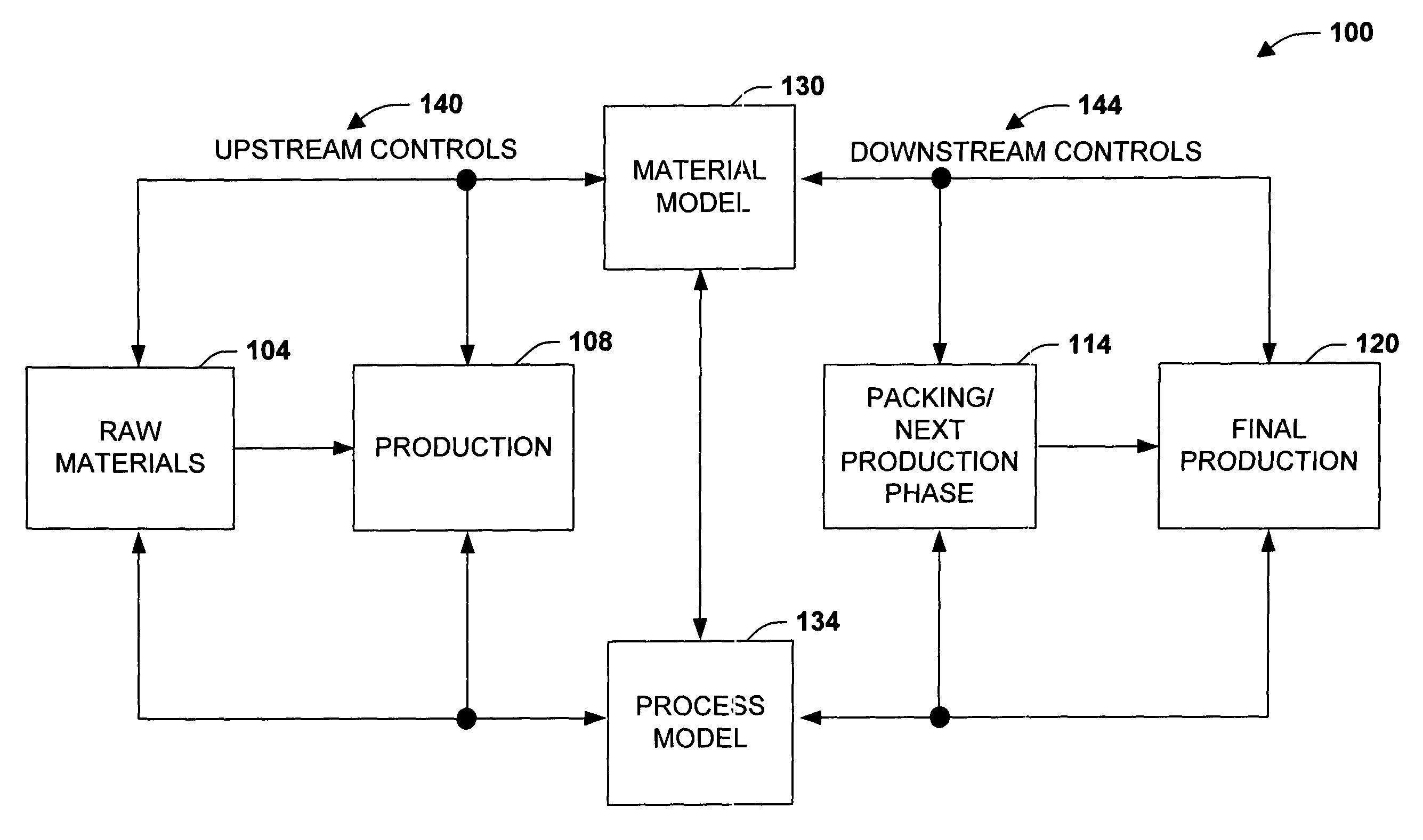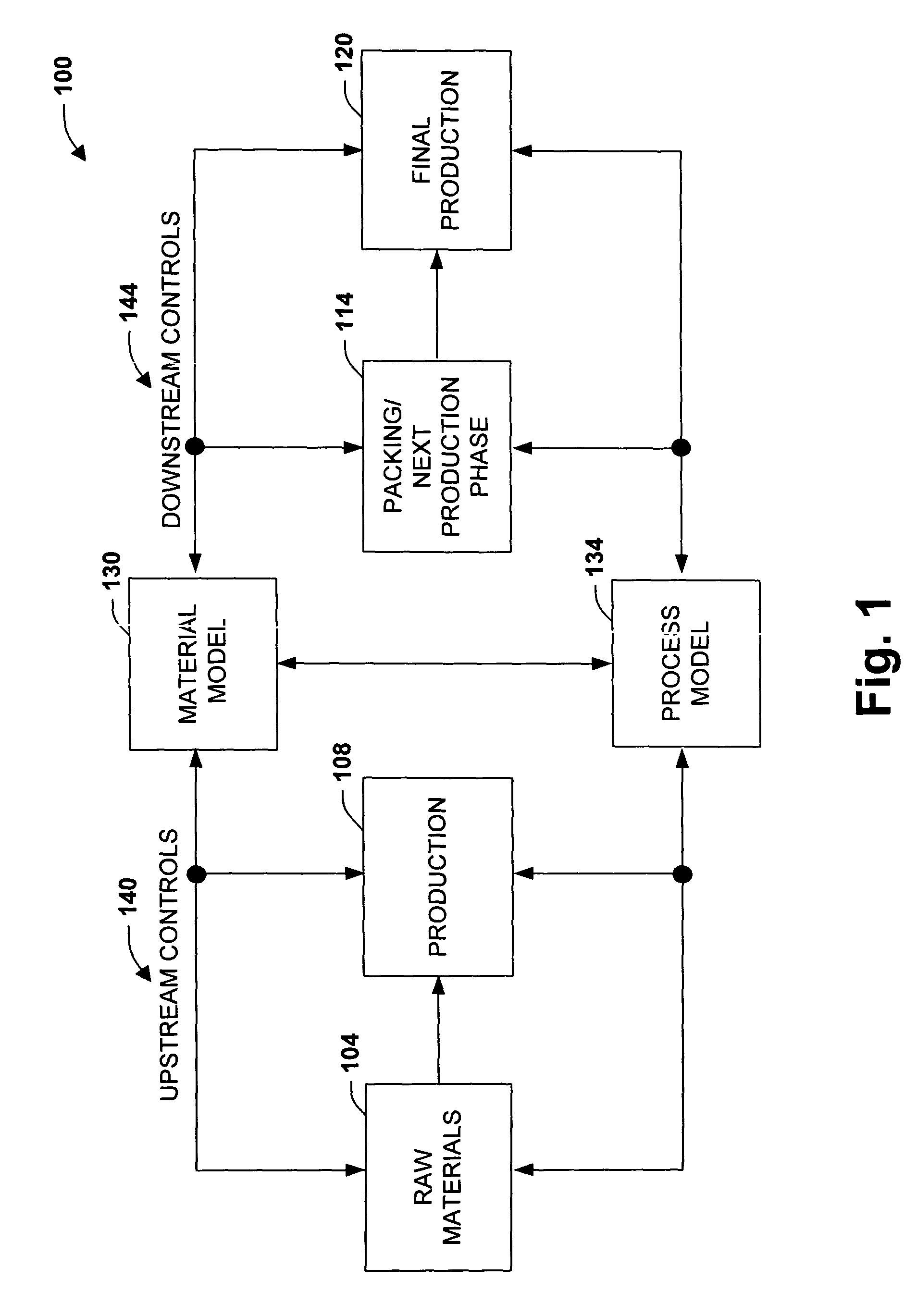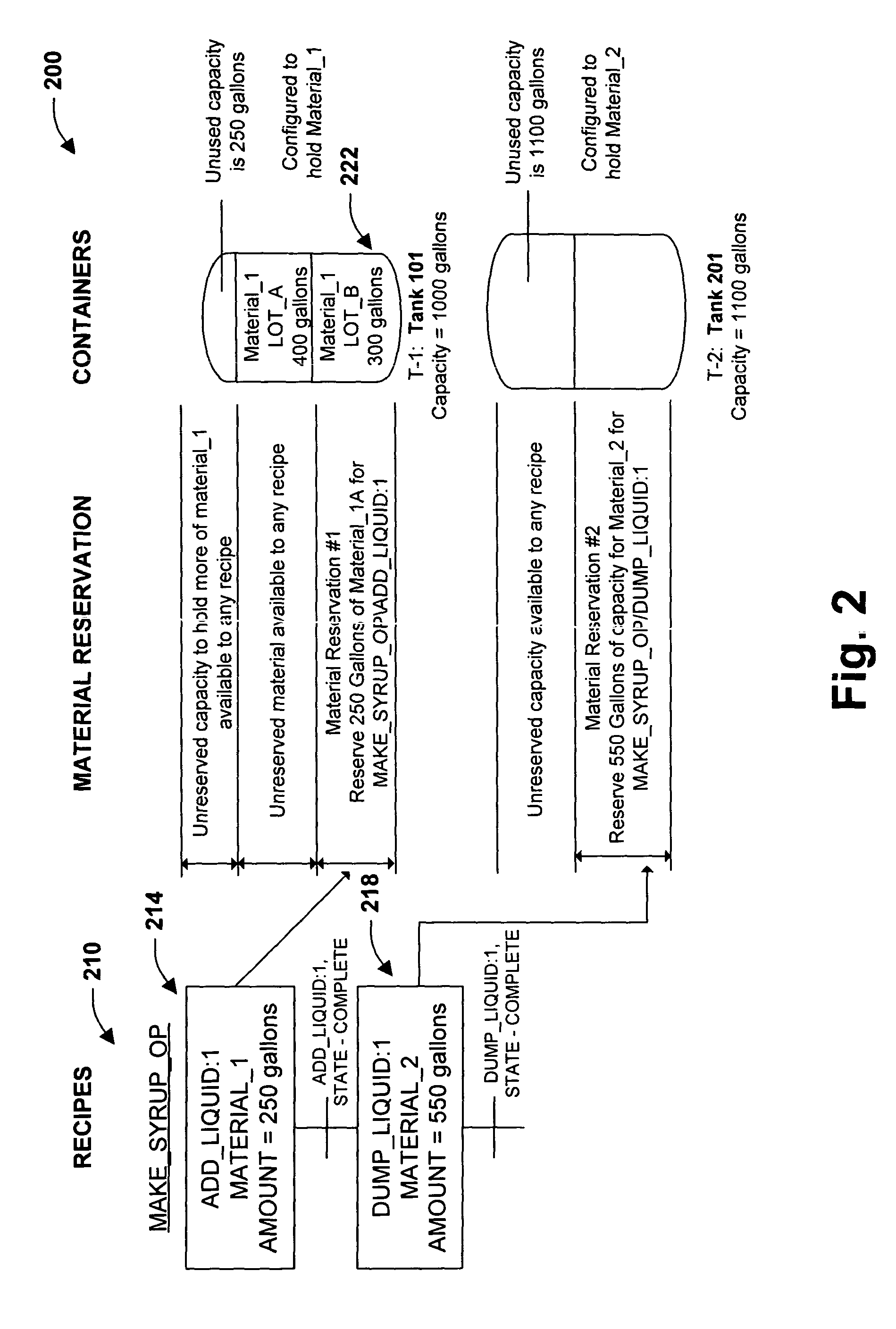Material reservation distribution system and method
a distribution system and material technology, applied in the field of industrial control systems, can solve the problems of complex factory equipment arrangement and programming, inflexible programming models, inefficient and costly in asset utilization and material control, and complex programming models, etc., to achieve efficient management, facilitate material-based processing, and mitigate waste
- Summary
- Abstract
- Description
- Claims
- Application Information
AI Technical Summary
Benefits of technology
Problems solved by technology
Method used
Image
Examples
example
[0097] MBR_ADD:1 requires an addition of Material—1, Lot—5.
[0098] MBR_ADD:2 requires an addition of Material—3, Lot—4.
[0099] MBR_DUMP:1 requires a distribution of Material—6, Lot—1, Label—2.
[0100] In this example, Unit 1 is selected because it can draw the materials with the specified lots. The lot and label for MBR_DUMP:1 are ignored until the material is distributed to Container—7. The lot and label are then assigned to the material
[0101]FIG. 13 illustrates a material driven methodology in accordance with an aspect the present invention. While, for purposes of simplicity of explanation, the methodology is shown and described as a series of acts, it is to be understood and appreciated that the present invention is not limited by the order of acts, as some acts may, in accordance with the present invention, occur in different orders and / or concurrently with other acts from that shown and described herein. For example, those skilled in the art will understand and appreciate that ...
PUM
 Login to View More
Login to View More Abstract
Description
Claims
Application Information
 Login to View More
Login to View More - R&D
- Intellectual Property
- Life Sciences
- Materials
- Tech Scout
- Unparalleled Data Quality
- Higher Quality Content
- 60% Fewer Hallucinations
Browse by: Latest US Patents, China's latest patents, Technical Efficacy Thesaurus, Application Domain, Technology Topic, Popular Technical Reports.
© 2025 PatSnap. All rights reserved.Legal|Privacy policy|Modern Slavery Act Transparency Statement|Sitemap|About US| Contact US: help@patsnap.com



